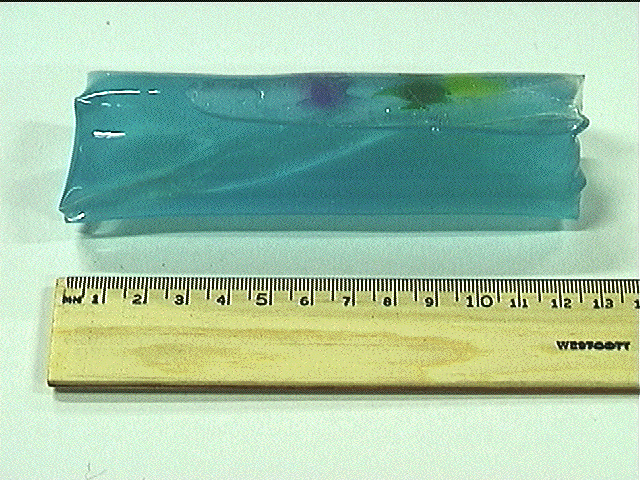
This chapter will describe the evolution of the first successful Squeezable from the earlier water tube to the foam ball cluster configuration, details of the making of the cluster including its shape, materials, sensors, sensing techniques involved and also the experience gained and lessons learned from using foams.
Before arriving at the final shape of the Squeezable, I considered many irregularly shaped objects. One of the important things I kept in mind was that the shape should be comfortable to hold and should also fit well into the contour of the palms. If this rule is not followed, users will find the object tiring to squeeze after a while. Objects with sharp edges, for example, a square block, are not suitable as the edges may become a strong barrier to squeezing. The flat surfaces of the square block do not fit well into the natural curling shape of our hands, making the block difficult to squeeze.
The solution to this problem is to use an object that has a curved surface. For example, a cylinder-shaped object will fit very well into the grip of the palm.
A cylinder-shaped tube of liquid was then chosen for this. The liquid is held together by a piece of almost-transparent polyurethane membrane that wraps around forming an infinite loop (Fig. 2.1).
The elastic nature of the polyurethane membrane is a very good feature of the liquid Squeezable. It is able to transform into many other shapes when squeezed and return to its original shape and size when released. The liquid nature of the object makes it feel very "organic," i.e. like squeezing part of your own body.


1.) the polyurethane membrane ages and leaks;
2.) sensors cannot be put inside of the Squeezable as this will damage the polyurethane membrane;
3.) indirect squeeze sensing from the surface of the Squeezable is not effective, as the pressure comes from the inside of the object;
4.) taping sensors directly onto the polyurethane membrane will reduce the elasticity of the membrane and also damage it.
The problems with the liquid Squeezable lead me to experiment with foam objects. When choosing the right type of foam, I used the type that is not too soft and not too hard so that it would not collapse under its own weight and also would not be too difficult to squeeze. The foam Squeezable is the shape of a ball measuring about 18 cm in diameter (Fig. 2.3). The idea is to sense the internal pressure of the ball when it is squeezed. So, I built a sensor cube measuring 4x4x4 cm with perspex (clear plastic) and mounted six Force Sensing Resistors or FSRs (Fig. 2.4) on all the faces of the cube (Fig. 2.6). After emptying out the center of the foam ball (Fig. 2.5) to roughly the size of the cube, the sensor cube was then buried and the ball sealed with spray glue.
The next question to ask is : why did I choose to put six sensors on a single cube? Why not three with each one along one axis? The reason why six is better than just three is : I can divide the surface of the ball into six regions. Each region can be pressed independently of the others. If there are only three sensors, though I can tell there is a force acting on one axis, I will not know which direction it comes from. This will mean that squeezing the ball on these opposite regions will not do anything different. Furthermore, the characteristics of foam actually allows me to do just that. Unlike liquid, when the foam ball is compressed on one side, except for the surrounding region of the pressure point, the whole ball is virtually in the same state. This is because this foam is elastic and is not totally solid. There is room for compression and elasticity for expansion without displacing and taking up material around the pressure point.
The foam ball used was of a comfortable size for both hands but the foam was not soft enough for prolonged squeezing and therefore, users found it tiresome to squeeze. Also, because the ball was too thick, the sensors were not sufficiently sensitive to the squeezing.
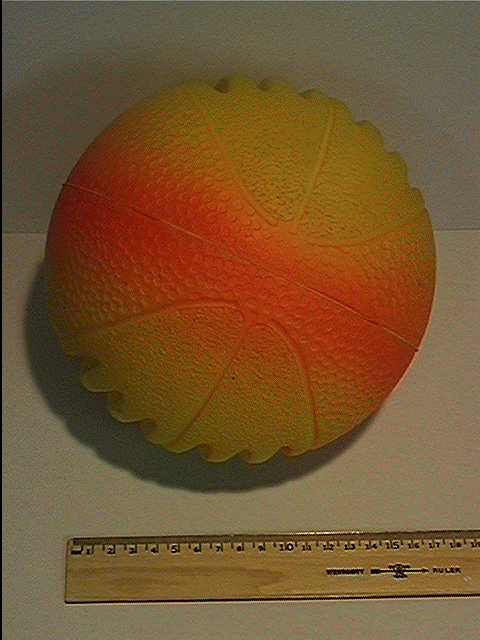

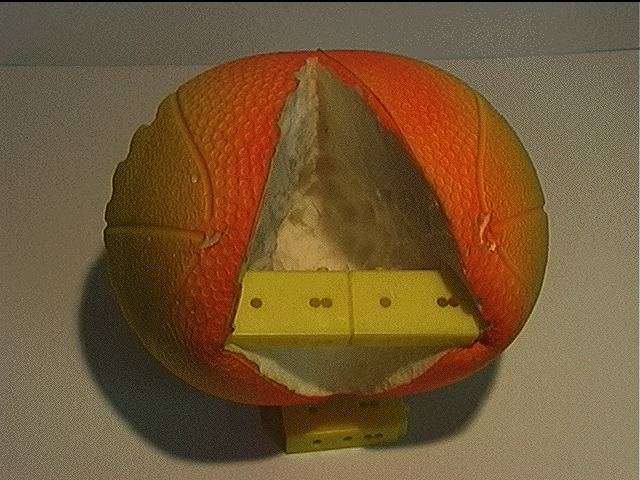

The next version of the Squeezable was a cluster (about 12 cm in diameter) of equally sized soft foam balls (about 6 cm in diameter) with the same sensor cube (Fig. 2.6) within the cluster. Since the sensor cube has one Force Sensing Resistor (FSR) on each of its faces, one foam ball sits on each FSR (Fig. 2.7) forming an uncompleted cluster with "holes" or "openings" between balls. These "holes" are then covered by additional foam balls. This makes a 14-ball cluster which is symmetrical and is shown in Figs. 2.8, 2.9 and 2.10.
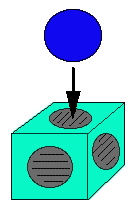
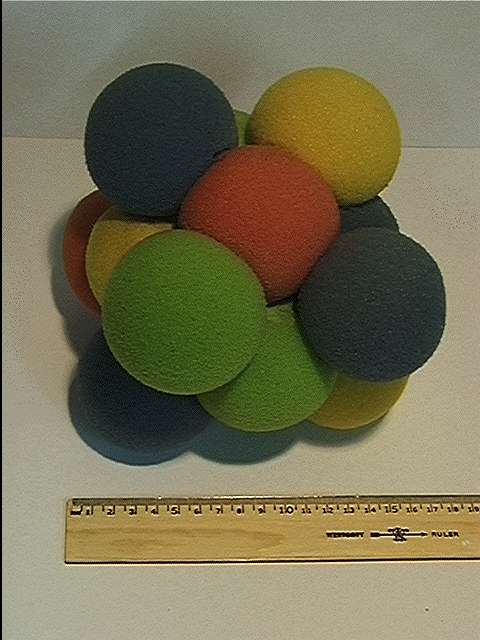


The foam ball cluster has been a very successful Squeezable. The sensor cube is able to detect not just direct pressure from foam balls sitting on it, but also pressure caused by the foam balls used to fill up the "holes" in the cluster. This is because all the foam balls are glued to their nearest neighbors, creating an interdependency among the balls, i.e. pushing a ball will affect the sensors of neighboring balls. This version is also soft, comfortable and lightweight.
The next step was to test the Squeezable during the MIT Media Laboratory's bi-annual sponsor meeting and open house. Many people came by and did many different things to the Squeezable. They did more than just squeezing the cluster, e.g. hugging, rolling, throwing, shaking and stretching.

After the open house and user testing, I have collected some observations and feedback from users. The summary of these observations :
1. the foam tears and progressively flakes off when squeezed
2. the sensors are not responsive when only one ball is squeezed
3. the sensors used are flat and only sensitive in one axis
4. only one person can play with it at one time
The I-Cube (Figs. 2.12, 2.13) is a MIDI based 32-channel analog-to-digital converter from Infusion Systems, Inc.. It came with a library of tools for Opcode's Max graphical programming environment. These tools give full control of the digitizer's sampling rates, resolutions and channels.
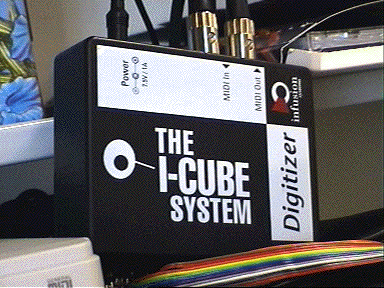
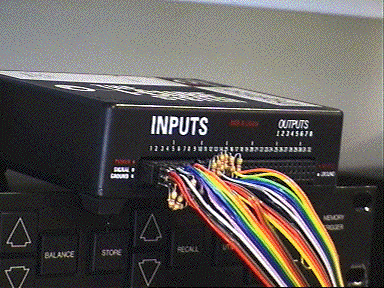
Since the value of one FSR can vary from open circuit to as low as about
2 kilo-ohms, I have put it in series with another resistor
![]() (47 kilo-ohms) to form a potential divider below :
(47 kilo-ohms) to form a potential divider below :

